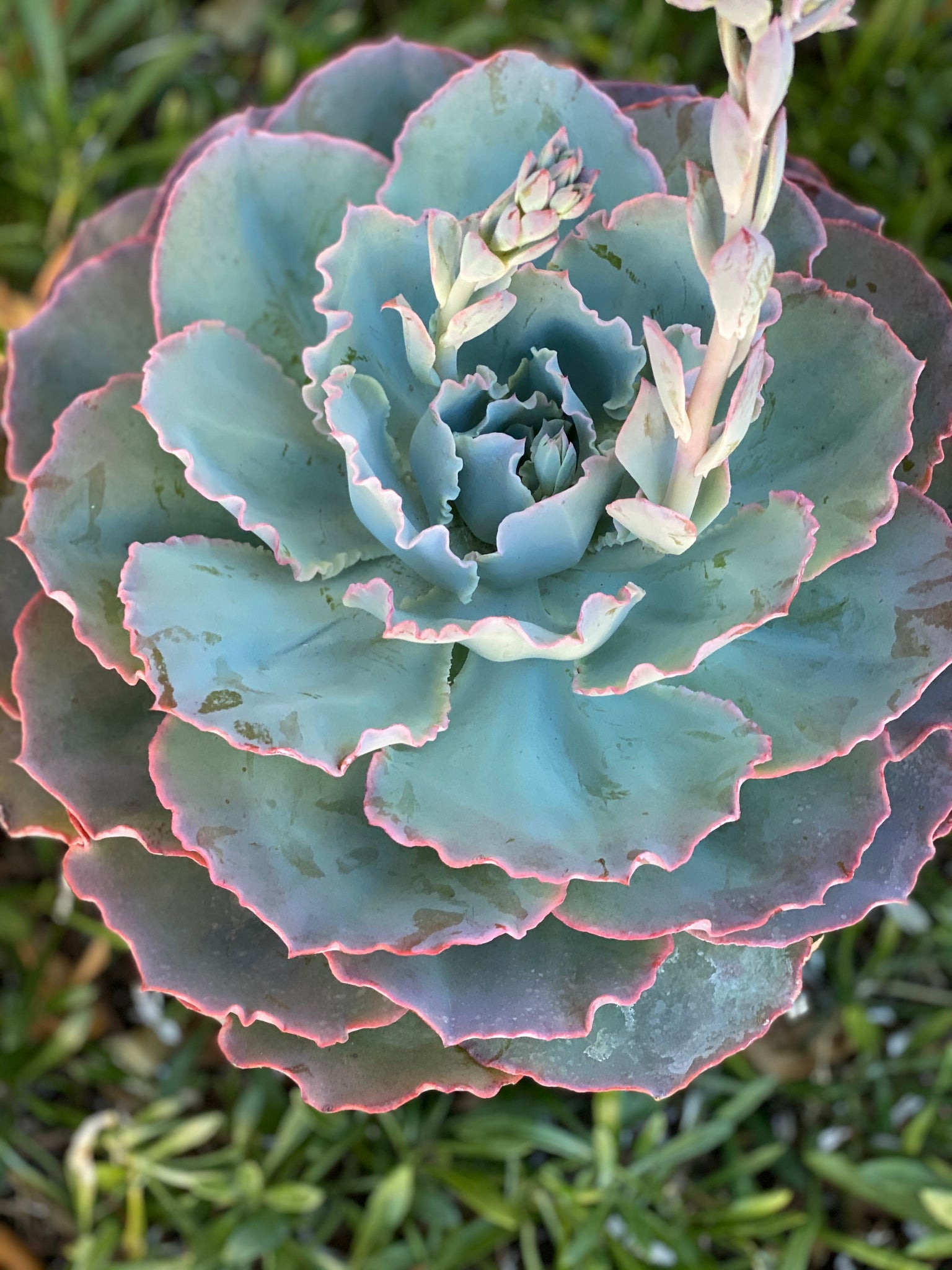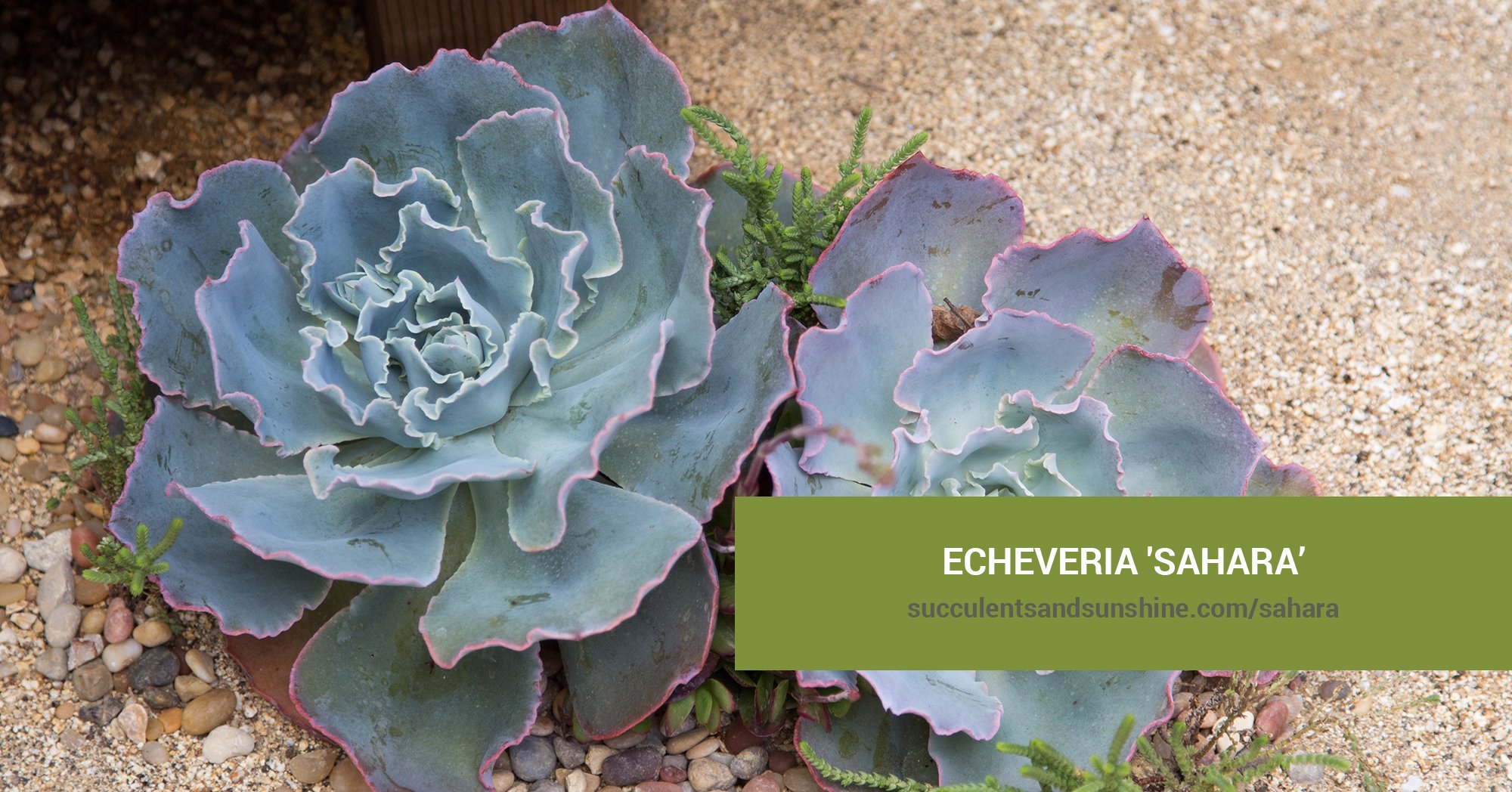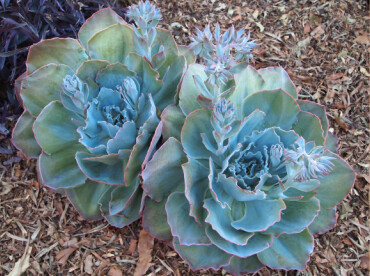This Echeveria has ruffled leaves with a mint hue, which take on a pink tone when exposed to direct sunlight. In the summertime, it produces coral-colored blossoms.
Table of Contents
Care and Propagation Information
Echeveria ‘Sahara’ is a heat-resistant succulent that can stand up to more sunlight and warmth than other types of succulents.
Watering
For Echeveria ‘Sahara’, standard succulent watering practices should be followed. Utilize the “soak and dry” technique, and make sure the soil has had time to dry out between waterings. During the summer, water only sparingly.
Where to Plant
If you live in an area where temperatures drop below 30°F (-1.1°C), it is recommended to grow Sahara in a pot that can be moved indoors. This succulent thrives in areas with both full and partial sunlight.
How to Propagate Echeveria ‘Sahara’
This type of Echeveria can be propagated by taking cuttings or removing offshoots from the mother plant.
Cuttings
To propagate Echeveria ‘Sahara’, take a clean, sharp knife or scissors and cut a small piece of the plant just above a leaf on the stem. Let it sit for a few days to allow the wound to heal, then plant it in a pot with good drainage.
Offsets
The Sahara will produce small clumps near the base of the plant. Carefully remove them and let them sit in a dry place for one or two days before planting them in soil with good drainage.
Care and Propagation Information
General Care for Echeveria ‘Sahara’
Watering
For Echeveria ‘Sahara’, standard succulent watering practices should be followed. Utilize the “soak and dry” technique, and make sure the soil has had time to dry out between waterings. During the summer, water only sparingly.
Where to Plant
If you live in an area where temperatures drop below 30°F (-1.1°C), it is recommended to grow Sahara in a pot that can be moved indoors. This succulent thrives in areas with both full and partial sunlight.
How to Propagate Echeveria ‘Sahara’
This type of Echeveria can be propagated by taking cuttings or removing offshoots from the mother plant.
Cuttings
To propagate Echeveria ‘Sahara’, take a clean, sharp knife or scissors and cut a small piece of the plant just above a leaf on the stem. Let it sit for a few days to allow the wound to heal, then plant it in a pot with good drainage.
Offsets
The Sahara will produce small clumps near the base of the plant. Carefully remove them and let them sit in a dry place for one or two days before planting them in soil with good drainage.
FAQ
Is Echeveria an indoor plant?
Echeveria plants typically thrive best when grown outdoors in bright, sunny locations. However, they can still manage to grow indoors in certain circumstances, such as in sun-rooms, conservatories, and other areas that get direct sunlight all day. These plants are part of a large genus of flowering plants that are native to Central America.
Does Echeveria need sun or shade?
Paraphrase: Illumination: Many succulent gardeners are unable to provide their plants with the light they require. To keep your echeveria looking neat and healthy, make sure to place it in an area where it will get at least six hours of direct sunlight each day. If your plant is not exposed to extended periods of light, it will start to become leggy and lose its original shape.
Where should Echeveria be placed?
How do you care for Echeveria Sahara?
For Echeveria ‘Sahara’, the best way to water is the “soak and dry” method, which means the soil should be allowed to dry out completely between each watering. During the summer, water sparingly.
Does Echeveria need sun?
It is imperative that you put your echeveria in a spot with direct exposure to sun for at least six hours each day. Without sufficient light, the plant will become stretched out and lose its appealing shape. This is a common issue among succulent gardeners.



